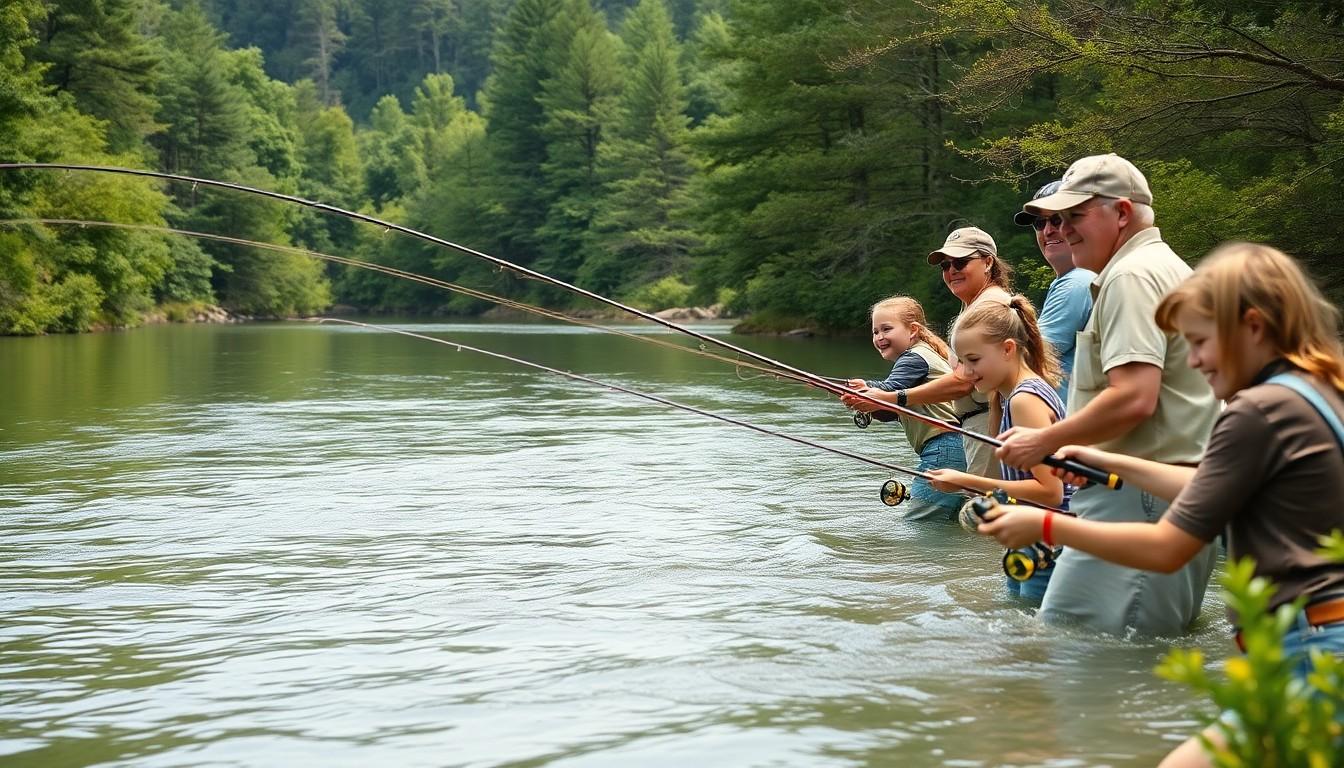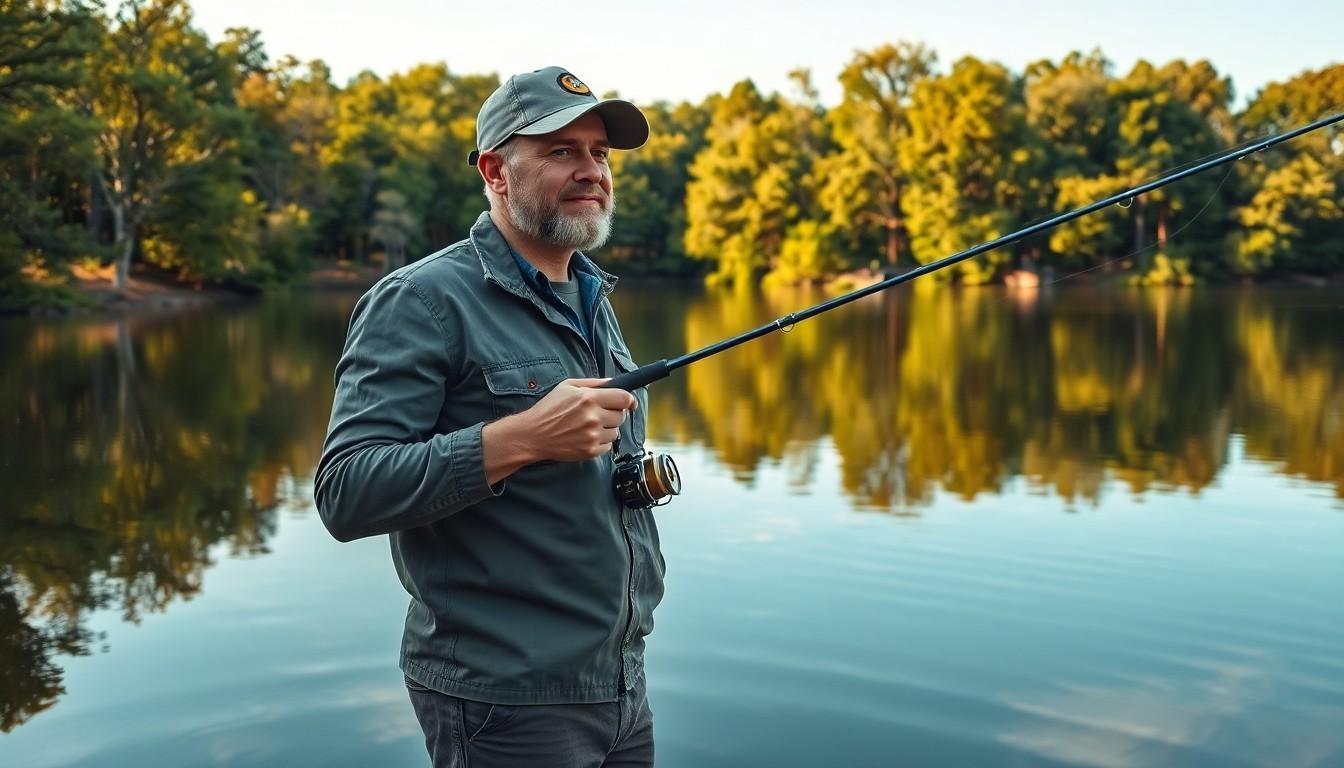In the heart of the Natural State, where the rivers flow like sweet tea and the forests whisper secrets, the Arkansas Game and Fish Commission is making waves. Whether it’s a new fishing regulation or a wildlife conservation initiative, there’s always something exciting brewing in the world of Arkansas outdoors. If you thought fishing was just about casting a line and hoping for the best, think again—there’s a whole lot of strategy involved, and the Commission’s updates are the playbook every angler and hunter needs.
Overview of Arkansas Game and Fish Commission
The Arkansas Game and Fish Commission (AGFC) plays a crucial role in managing the state’s fish and wildlife resources. Established in 1915, it oversees all conservation efforts and hunting regulations within Arkansas. This agency ensures sustainable practices to protect ecosystems, benefiting both wildlife and outdoor enthusiasts.
The Commission conducts regular assessments of fish populations, habitat conditions and wildlife health. They monitor species such as deer, bass, and waterfowl to maintain population balance. Recent initiatives focus on improving water quality and restoring natural habitats.
Updates on regulations and conservation programs are frequently communicated to the public. These updates serve as valuable resources for hunters and anglers, guiding them in compliant practices. Engaging public outreach efforts encourage community participation in conservation initiatives.
Funding for the AGFC primarily comes from hunting and fishing licenses, federal grants and partnerships with local organizations. Financial resources are allocated to research projects, habitat enhancement and educational programs. The Commission also collaborates with other agencies to address environmental challenges impacting Arkansas’s natural resources.
Investments in outdoor recreational facilities enhance access to fishing and hunting areas. Facilities include public access points, wildlife management areas and parks. Such investments ensure that residents and visitors enjoy diverse outdoor experiences.
Overall, the Arkansas Game and Fish Commission’s ongoing efforts support wildlife management, conservation education and outdoor recreation. These initiatives contribute significantly to the quality of life in Arkansas, fostering a culture of responsible outdoor stewardship.
Recent News Highlights

Recent activities of the Arkansas Game and Fish Commission (AGFC) include significant policy changes and upcoming events aimed at enhancing wildlife conservation and outdoor recreation.
Major Policy Changes
New regulations focus on the management of fishing licenses and permits, adapting to shifts in population and habitat conditions. Improvements to the deer management program emphasize evidence-based practices to maintain sustainable populations. Additionally, streamlined processes aim to simplify applications for hunting permits, making it easier for outdoor enthusiasts to engage in recreational activities. Public awareness campaigns inform citizens about these changes, promoting responsible participation in conservation efforts.
Upcoming Events
A series of community workshops scheduled for this fall offers valuable insights into local conservation efforts and best practices for sustainable fishing and hunting. The AGFC will host its annual fishing tournaments, inviting anglers to showcase their skills while adhering to conservation guidelines. Educational programs at state parks will provide families with hands-on experiences, fostering appreciation for Arkansas’s rich natural resources. These events aim to engage the public and cultivate a culture of outdoor stewardship among residents.
Wildlife Conservation Efforts
The Arkansas Game and Fish Commission prioritizes wildlife conservation through various initiatives. These efforts aim to safeguard ecosystems and promote sustainable outdoor activities.
Habitat Restoration Projects
Habitat restoration projects receive significant attention from the AGFC. Focus areas include wetlands, forests, and river ecosystems, where efforts enhance wildlife habitats. Restoration activities involve planting native vegetation and implementing water management systems. Additionally, partnerships with local organizations foster community involvement in these projects. Engaging local volunteers helps raise awareness about conservation challenges and solutions.
Endangered Species Initiatives
Endangered species initiatives highlight the importance of protecting vulnerable wildlife in Arkansas. The AGFC collaborates with federal and state agencies on recovery plans for species like the Ivory-billed Woodpecker and the Arkansas River Valley’s Least Tern. Conservation strategies include habitat protection, public education, and species monitoring. Data collected helps inform guidelines for land use and wildlife management. These initiatives create a balanced approach to preserving biodiversity while ensuring the health of ecosystems.
Fishing Regulations Updates
Updates on fishing regulations ensure that anglers remain informed and engaged with sustainable practices in Arkansas.
New Licenses and Fees
Changes to licenses and fees reflect the Arkansas Game and Fish Commission’s goal of enhancing fishing opportunities. A new fee structure is in place to support conservation initiatives, with annual fishing licenses priced at $10 for residents and $25 for non-residents. Additionally, senior citizens and disabled veterans can access reduced rates, promoting inclusivity. Discounts for youth licenses are also available, encouraging younger generations to participate in outdoor activities. These adjustments aim to generate funding for habitat restoration projects and improve access to fishing locations statewide.
Seasonal Changes
Seasonal changes influence fishing regulations significantly. The Arkansas Game and Fish Commission adjusts regulations in line with species breeding cycles and population dynamics. For example, new catch limits apply during peak spawning periods for bass, aiming to protect juvenile fish. Specific water bodies now have designated no-fishing zones to support habitat recovery. Additionally, certain species may have altered open seasons, optimizing the timing for anglers while safeguarding ecosystems. Staying updated on these seasonal shifts helps anglers comply with regulations and support sustainable fishing practices.
Community Engagement and Education
The Arkansas Game and Fish Commission prioritizes community engagement through various educational initiatives. Workshops scheduled for this fall provide insights on local conservation practices, enhancing public understanding of wildlife management. Local fishing tournaments encourage family participation while fostering a sense of community among outdoor enthusiasts.
Informative programs held at state parks serve to educate residents about sustainable practices. These events emphasize responsible fishing and hunting, allowing participants to learn directly from wildlife experts. Efforts to communicate changes in regulations and conservation strategies ensure that citizens remain informed.
Youth outreach programs attract younger generations to outdoor activities, promoting a legacy of stewardship. The AGFC partners with schools to introduce educational modules about local ecosystems and conservation importance. Engaging curriculum fosters an appreciation for Arkansas’s natural resources among students.
Public awareness campaigns highlight the significance of species preservation and habitat protection. Collaborations with local organizations further amplify these messages, creating a unified front for conservation efforts. Volunteers play a crucial role, participating in habitat restoration projects that directly benefit wildlife.
Newsletters and social media updates keep the community well-informed about ongoing initiatives. Regular updates on fishing regulations and conservation efforts make it easier for anglers and hunters to comply with guidelines. By fostering a culture of outdoor stewardship, the AGFC helps enhance the overall quality of life in Arkansas.
Active participation in community activities not only enriches individual experiences but also strengthens connections within neighborhoods. The combination of educational resources and hands-on activities builds a robust network of informed citizens committed to preserving Arkansas’s natural heritage.
Conclusion
The Arkansas Game and Fish Commission continues to make significant strides in wildlife conservation and outdoor recreation. With ongoing updates to regulations and community engagement initiatives, the AGFC fosters a culture of stewardship among residents. Their commitment to sustainable practices ensures that Arkansas’s natural resources are preserved for future generations.
As the AGFC implements new policies and educational programs, outdoor enthusiasts are encouraged to stay informed and actively participate in conservation efforts. This collaboration between the Commission and the community is vital for maintaining the rich biodiversity and outdoor opportunities that Arkansas has to offer.

